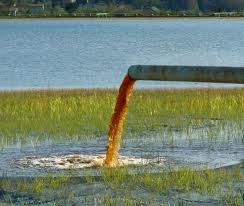Mathematical model to predict the transport of dissolved arsenic in groundwater influenced by seepage velocity
Keywords:
Mathematical model, Seepage velocity, Groundwater systemAbstract
Development of mathematical model to predict the transport of dissolved arsenic in groundwater influenced by seepage velocity has been carried out. This model was developed to monitor the rate of concentration at different period and depths. High and low concentrations were observed at different periods and depth as presented in the figures. These conditions can be attributed to soil stratification deposition in the study location and the influence of man-made activities. Based on these facts, it is recommended that risk assessment should be thoroughly done for soil and water and the predicted model should be applied in design and construction of groundwater system in the study area.
References
Armon, R., Kitty, 1994. The Health Dimension of Groundwater Contamination. In Holler (ed). Groundwater Contamination and Control. New York: USA. Marcel Dekker, INC. P (71-85).
Chistensen, T.H., Stegmann, R., 1992. Landfill Leachates: An Introduction. In Christensen, .T.H., Stengmann, R., (ed). Land filling of waste leachate. Great Britain. St Edmundsbury Press, Bury St Edmunds, Suffolk. P (1-14).
Duncan, M., 2003. Domestic wastewater treatment in developing countries. Duncan Mara. UK. Cromwell Press.
Keller, E.A., 1982. Environmental geology. 3third Ed. Bell and Howell Company.
Pescod, M.B., 1992. Wastewater treatment and use in agriculture. Food and Agriculture Organization (FAO).
Sharma, R.K., Agarwal, M., 2005. Biological effects of heavy metals. J. Environ. Biol. 26, 301-313.
Farooqui, A., Masuda, H., Firdous N., 2007. Toxic fluoride and arsenic contaminated ground water in the Lahore and Kasur district, Punjab, Pakistan and possible contaminant source. Environ. Pollut. 145,839-449.
Radha-Krishnan, R., Dharmaraj, K., Ranjitha-Kumari, B.D., 2007. A comparative study on the physico-chemical and bacterial analysis of drinking, borewell and sewage water in the three different places of Sivakasi. J. Environ. Biol. 28, 105-108.
Tyagi, P., Buddhi, D., Chaudhary, R., Sawhney, R.L., 2002.Degradation of ground water quality in industrial areas of India - A review. Ind. J. Environ. Protect., 20, 174-181.
Sunkad, B.N., Patil, H.S., 2004. Water quality assessment of Fort Lake of Belgaum (Karnataka) with special reference to zooplankton. J. Environ. Biol. 25, 99-102.
Shaji, C., Nimi, H., Bindu, L., 2009. Water quality assessment of open wells in and around Chavara industrial area, Quilon, Kerala Journal of Environmental Biology September 2009, 30(5), 701-704 ©Triveni Enterprises, Lucknow (India).
United Nations, 2001. Implications of groundwater rehabilitation on water resources protection and conservation: artificial Recharge and water quality improvement in the escwa region New York.

Published
How to Cite
Issue
Section
Copyright (c) 2012 Solomon Ndubuisi Eluozo

This work is licensed under a Creative Commons Attribution-NonCommercial-NoDerivatives 4.0 International License.
